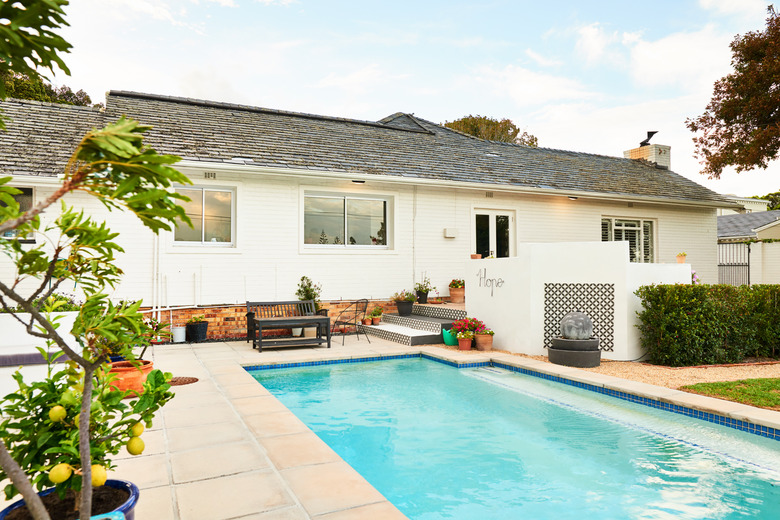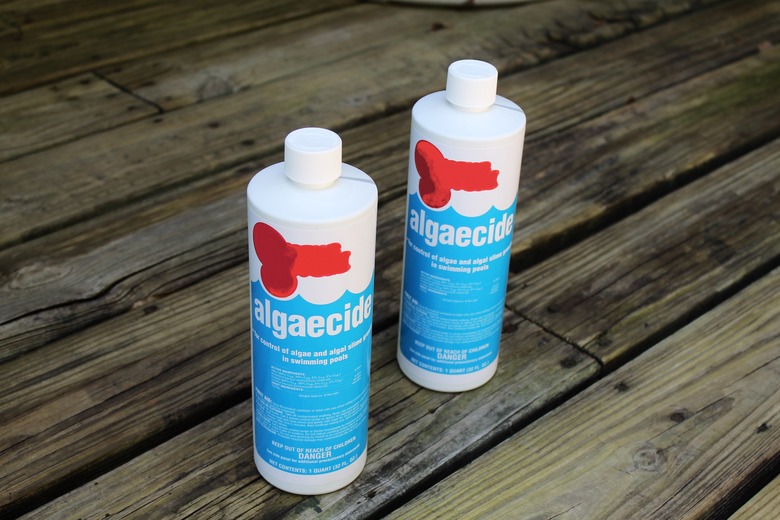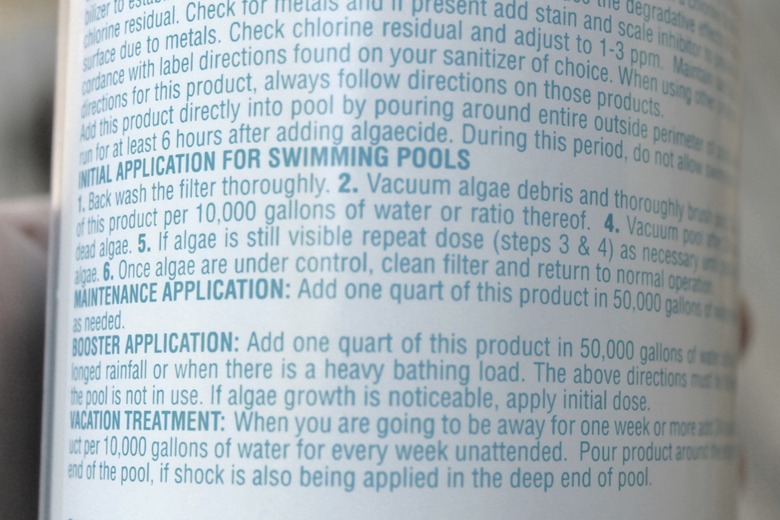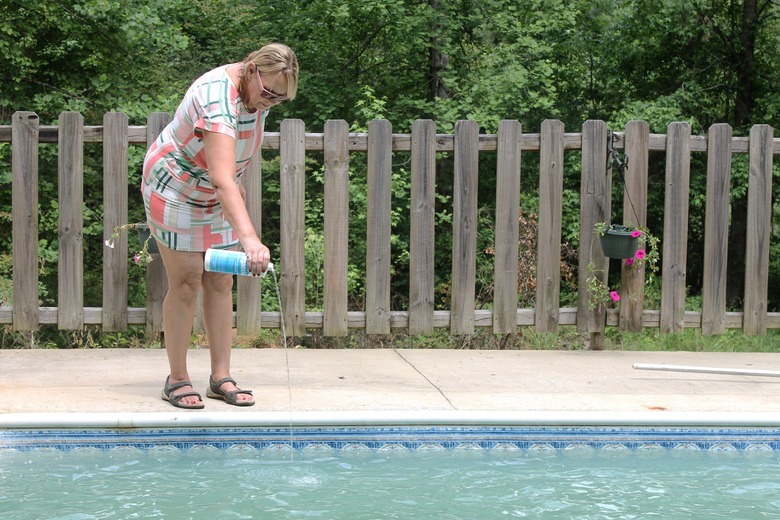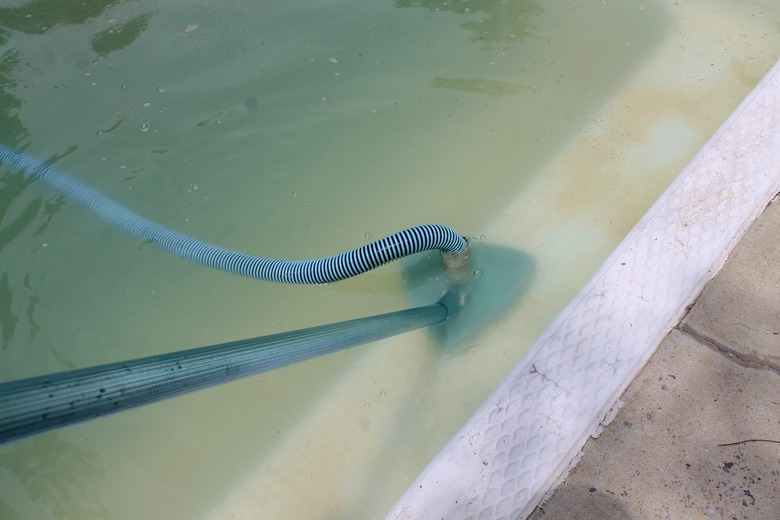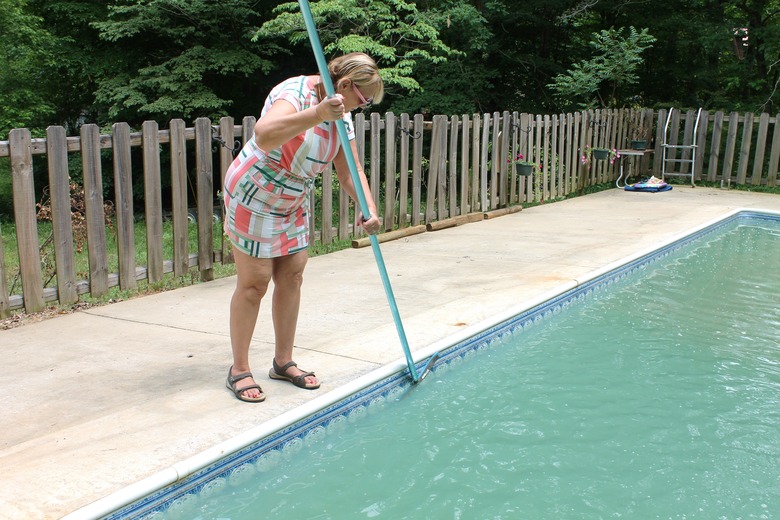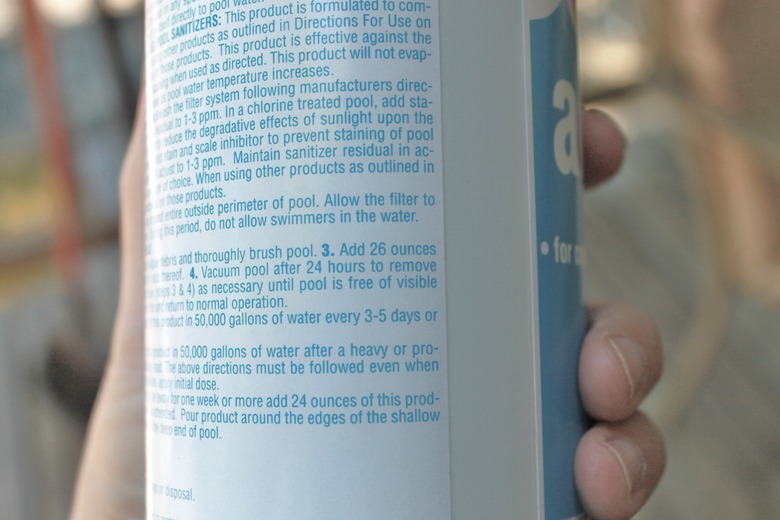How To Use Algaecide
We may receive a commission on purchases made from links.
Algae growth is a common problem in swimming pools, and pool owners generally have to deal with algae at least a few times a year. Algae spores blow into the pool or are deposited by rain or even human contact. With the presence of carbon dioxide, warm weather, and off-balance pH levels, algae thrive and can cause green water or slimy deposits that are yellow, green, pink, and black. Knowing how to use algaecide can help you keep your swimming pool clean without excessive use of chlorine.
Things Needed
-
Rubber gloves
How to Use Algaecide
1. Select the Algaecide
Choose the correct algaecide for your pool based on the type of algae present. Some algaecide products are all-purpose, meaning they treat several kinds of algae. However, if you have a specific type of algae, choose the appropriate algaecide. For example, copper-based algaecide best treats yellow algae, while silver algaecide is effective on green and black algae.
2. Balance the Pool pH
Restore the proper pool chemistry before trying algaecide. Balance the pool pH levels if they're not correct. Adjust the free chlorine level to 3 ppm. This should help control algae growth without the need for an algaecide. If this doesn't work, you can continue to use the algaecide you select.
3. Determine the Dosage
Determine the amount of algaecide to add to your swimming pool. Follow the manufacturer's directions on the algaecide bottle for proper measurements. Dosage will be based on the gallons of water your pool holds. Before handling the algaecide, put on the rubber gloves and eye protection to avoid skin burns and possible eye damage.
4. Add the Algaecide
Pour the algaecide dose into the water, depositing it in several areas around the pool. Your swimming pool pump should be running at this time to help circulate the algaecide. Wait about 30 minutes before allowing anyone to swim after the algaecide application.
5. Vacuum Your Pool
Vacuum the swimming pool 24 hours after the first application of algaecide to remove the dead algae debris in the pool. If algae is still visible in the water, repeat the application of algaecide in the pool, following the manufacturer's instructions.
6. Scrub the Pool
Scrub the bottom and sides of your pool tile before the first application of algaecide if algae growth is heavy and pronounced. For this scenario, wait at least 24 hours before swimming in the pool.
7. Apply Maintenance Doses
Follow the manufacturer's instructions on your algaecide for applying maintenance doses once the problem growth has been defeated. Every three to five days is recommended in hot temperatures or if the pool is being used heavily.
Tip
Algaecide may be required in your pool in the winter months as part of routine care. Periodically monitor your swimming pool, especially if it is covered, to check for algae growth; add algaecide when needed.
Warning
Possible side effects may occur when using a metal, mineral-based algaecide like copper or silver. Some copper formulas may turn swimmers' hair a different color, while silver may react with the sunlight and stain the pool. An additional ingredient like a sequestering agent may be needed to counteract these adverse reactions.
